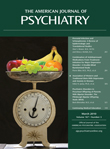This book is an outgrowth of discussions by members of the APA Pathophysiology Workgroup, who were convened to update DSM to its newest iteration, DSM-V. A subgroup of 26 international experts from the larger workgroup embraced the daunting task of exploring the link between diagnostic classification and etiology across a subgroup of four anxiety disorders for which stress or fear was thought to be a contributory factor: posttraumatic stress disorder (PTSD), panic disorder, social phobia, and simple phobia. The various chapters, written by the discussants of the Stress-Induced and Fear Circuitry Disorders Workgroup, which met in the spring of 2005, provide the interested reader with an insider's view of the contemporary arguments for classification that will be the basis of decisions for DSM-V.
The book is divided into three major sections. The first section, four chapters long, is a review of the scientific evidence in support of each of the four diagnostic classifications. Although the workgroup met in 2005, the contributing authors include references from as recent as 2008. The chapters include a discussion not only of the diagnostic construct but also of conceptual limitations, research gaps, and salient directions for future research; thus the reader is brought up to date on the current state of the art. The information provided is of value both to trainees who wish to familiarize themselves with the scientific rationale for the diagnostic classification and to experienced clinicians or researchers who wish to consolidate their knowledge base.
The second section of the book, which includes only two chapters, is the most conceptually rich. Its primary focus is on exploring evidence for the continuity of these four disorders across the lifespan (chapter 5), as well as discussing evidence that these disorders form a cohesive and distinct group (chapter 6). Each chapter in its own way demonstrates the limits of the research currently available, and each flags key concepts to be considered in future research. Ultimately, the authors of chapter 6 (Fyer and Brown) conclude that "the DSM anxiety categories do not map neatly onto simple, consistent, and distinct etiological pathways" and that "given this complexity and our current extremely incomplete stage of knowledge, we are unlikely, at this point in time, to define a significantly ‘truer' anxiety nosology." They also note that "plans to make major modifications in the classification should probably be undertaken with some degree of caution."
The final section of the book covers an array of special topics likely to include something of interest to most readers, followed by a chapter of concluding remarks. The topics, all related to the anxiety disorders under discussion, range across subject areas as diverse as genetics, neuroimaging, cognition, neurochemical markers, psychosocial factors, and anxiety in ethnic minorities. The most integrative among these is chapter 12, on neuroimaging. The authors, who undertake a systematic discussion of the fear neurocircuitry and a disorder-specific review of imaging studies, integrate these for the reader, discussing commonalities and specificities across the disorders, as well as limitations in imaging studies so far completed, further mapping out an agenda for future research.
In sum, Stress-Induced and Fear Circuitry Disorders provides readers with an enhanced understanding of the four possibly etiologically related disorders PTSD, panic disorder, social phobia, and simple phobia. Whether read as a whole or piecemeal with a focus on chapters of interest, this book should be appreciated by a wide audience.

